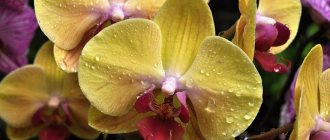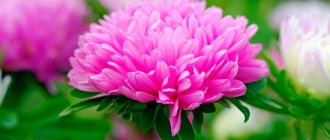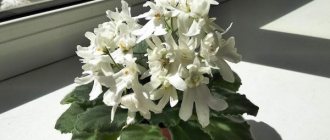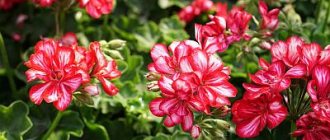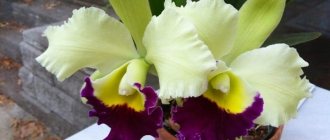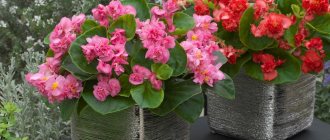The Golden orchid belongs to a genus of herbaceous epiphytic plants from the genus Phalaenopsis. The plant is called Golden because it has yellow-orange or golden petals. With proper care, it lives for about 12 years.
Description and photo
Golden Beauty Orchid (full Latin name Phalaenopsis Sin-Yaun Golden Beauty “Solid Gold”) is an exotic ornamental flowering indoor plant belonging to the ancient orchid family. Its rather large numerous flowers (7-8 cm in diameter) with delicate quivering petals, often of a rich yellow color, and a bright contrasting burgundy core-lip cannot but arouse admiration.
Golden Beauty is reminiscent in shape, like other orchids, of fluttering tropical butterflies , often forming two arched inflorescences, the height of which can reach 80 cm. The abundant, long-lasting flowering of Golden Beauty easily creates an atmosphere of joy, brings a feeling of well-being and luxury.
Medinilla (Medinilla magnifica)
If you compare this plant with other members of the list of the most expensive plants, medinilla could be quite a budget purchase. Compared to exotic orchids and their fabulous prices, 10 thousand rubles seems almost ridiculous. Therefore, it is not surprising that it has become very popular among amateur flower growers who are ready to part with a tidy sum of hard-earned money for pink clusters of medinilla flowers.
The plant received its name in honor of the Micronesian governor of the Mariana Islands, Jose de Medinilla. Of all the types of this ornamental crop, only medinilla splendor is grown as a houseplant.
- Which indoor plants match your zodiac sign?
Find out which indoor flowers suit your zodiac sign, and which, on the contrary, deplete your energy reserves. And if you don't believe in astrology, just check if your flower horoscope matches your personal preferences.
Under natural conditions, it can grow into a tall 3-meter shrub with leathery oval leaves up to 30 cm long. Domestic specimens are much more modest, and a height of 1 m is considered almost a record. However, if you do not live in a ten-room mansion with three-meter ceilings, even these figures will be enough for you. And this is provided that you are not a beginner and can provide medinilla with decent care.
History of origin
In their natural environment, orchids prefer a humid, saturated tropical climate and can most often be found on trees and rocks in South America, Australia and Southeast Asia.
Around the middle of the 18th century, the orchid became known in Europe. Unfortunately, the “taming” of the flower took more than a century before it was possible to find the right favorable conditions for growing this amazing plant.
Golden Beauty is a new hybrid that was artificially bred by breeders at a time of increased interest among Europeans in plants of this species.
Selection
Due to the fact that orchids are easy to cross, there are many varieties of them . Breeders often work intuitively. When choosing a pair of parents, they only consider their appearance. Most often these are large plants with bright colors. The result is interesting species and subspecies of orchids, but failures also happen. It happens that partners do not lead to fruit set or the seeds do not germinate for no particular reason.
Next you can see a photo of a golden orchid flower.
“Golden” brothers of Golden Beauty
Golden Beauty belongs to the collection of golden orchids , among which the following varieties are the most popular.
Gold Kinabalu
A very expensive and rare variety. It grows only on Mount Kinabalu, located on one of the peninsulas of Malaysia, the first flower appears after 15 years, there is only one peduncle of 6 buds, the orchid has a shorter flowering period.
The petals of this phalaenopsis are more pointed and asymmetrical with brown veins on a yellow background with a darkening in the middle.
Golden Jaguar
The individuality of this variety is given by the spotted core on a soft yellow background.
Golden Rush
Unique and rare species . The flowers have a delicate orange-pink color with veins and a red lip.
Golden Apple
Similar to Golden Rush, but the flowers have predominantly yellow hues, a brighter bud and a pink lip.
gold fish
It has medium-sized orange-pink flowers with veins extending from the base.
Distinctive characteristics of the species
Phalaenopsis Golden has wide, hard leaves of a rich green color. The average height of peduncles is 60 centimeters; they can be branched or straight. The stem is short and lost among the leaves.
The peculiarity of the variety is that the flowers have a lower lip of scarlet or bright pink color. Flowering occurs every six months and lasts approximately two months.
The number of orchid colors is huge, there are:
- pale orange;
- pale pink;
- golden;
- bright yellow, etc.
How to plant?
You need to decide on the planting capacity, soil and planting method.
Choosing a pot
Orchids love transparent plastic pots ; it is advisable to add side holes for the necessary ventilation of the root system, as is the case in the natural environment for orchids. A stock pot is not required; orchids love small containers suitable for the roots.
What should the soil be like?
You can buy ready-made soil in flower departments or prepare it yourself. It should consist of pieces of bark and charcoal, you can put particles of expanded clay, lowland peat, sphagnum moss. Shells, small particles of pebbles and crushed stone are suitable for drainage.
Step-by-step instruction
- Soak the orchid roots for 5-10 minutes in warm water and carefully remove them from the old container.
- Place drainage material approximately 1-1.5 cm high at the bottom of the new pot.
- Add a layer of charcoal.
- Transfer the plant to a new pot and add the prepared substrate without compaction to the base of growth.
- Secure the peduncle for stability on a long stick installed vertically in the pot using a clothespin.
- Sprinkle moss and bark on top.
- Do not water for 3 days.
Reproduction of Phalaenopsis Golden Beauty
The vegetative method can be used immediately after flowering, while the arrow has not yet dried out. Cut it diagonally above the bud. Be sure to treat the wound with activated charcoal or cinnamon.
Place the peduncle in a jar with water and a stimulant, and place it in a greenhouse. Keep at +25 °C. The light needs to be diffused. Change the fluid every three days.
In about a week the first roots will appear. Following this, the cutting is transplanted into the substrate, but is kept in a protected environment until the active growing season begins.
If a baby forms on a flower, then everything is much simpler. Wait until the young shoot grows roots at least 5 cm long. Then carefully separate it from the mother specimen and, after moistening it with a stimulant, plant it in a small pot with soil (a disposable transparent cup will do). Until final rooting, it is better to keep the baby in a greenhouse.
Orchid care at home
Golden Beauty is unpretentious . It is enough to determine a suitable place for it and plan a watering schedule.
Temperature
- It is optimal to maintain the temperature +20°С…+24°С (Not more than +30°С).
- Sudden changes should be avoided.
- In the autumn-winter season, temperatures of +17 °C…+22 °C are more suitable.
Lighting
Bright lighting is desirable, but without direct sunlight, they can cause burns.
Watering
In winter, the orchid can be watered 2 times a month when completely dry, in summer 1 time a week. There are different methods of watering :
- immersion in warm water for 20 minutes;
- gravy in the pan;
- warm shower.
It is better not to leave water in the pan after watering.
Top dressing
Used as fertilizer:
- mineral complex fertilizers for orchids in strict dosages;
- nitrogen fertilizers for growth;
- potassium and phosphorus during flowering.
Do not fertilize in winter.
Trimming
After flowering, the dried stems of the flower stalks should be trimmed with disinfected scissors, leaving a small shoot.
Transfer
A planned transplant is carried out every 4-5 years, usually in the spring.
Care during the flowering period
During the flowering period, watering of plants is increased, plants are fed with potassium and phosphorus fertilizers.
What to do if it doesn't bloom?
It is necessary to create stressful conditions and provoke flowering:
- cause a drought;
- lower the temperature;
- Move to a dark room for a while.
Features of flowering
Periods of flowering and dormancy at home
- Your adult pets may grow two or even three peduncles Peduncles of orchids with large flowers develop slowly. Since autumn;
- Flowers may bloom at different times. And so on until the summer;
- In nature, phalaenopsis can bloom continuously. The hybrids created are also adapted to the dormant period. And this is winter time.
Duration
- Phalaenopsis flowers do not bloom at the same time. But for a month, or maybe two, you will be able to admire their original and amazing flowers;
- , with good care, can .
Start
In early autumn you will be able to detect emerging flower stalks. In the last days of autumn they may already have formed.
Phalaenopsis blooms in early autumn.
Diseases and pests
More often, the reason for the withering of leaves and buds, the formation of mold and burns is the improper maintenance of the orchid, which needs to be reconsidered.
For more serious diseases, treatment is carried out using antibacterial or fungicidal drugs. Viral infection requires isolation from other plants and cannot be treated .
Pests such as spider mites and bulb mites are dangerous for orchids. In this case, a warm shower and spraying with acaricides will help.
It is also recommended to remove all damaged areas of the plant and replant it in a new pot and soil.
Kalanchoe thyrsiflora
Herbaceous plant, up to 60 m in height. It is sometimes called desert cabbage because of its similar rosette shape. It consists of round, obovate leaves of gray-green color, covered with a white powdery coating. In the rosette, the leaves are laid parallel to each other, like plates, with their edges directed upward. With high insolation, the leaf plates, starting from the edges, are painted a spectacular scarlet color.
Kalanchoe paniculataflora
Since this type of Kalanchoe is not very common in our country, its propagation by seeds is most often used. It is also possible to propagate by leaf cuttings and daughter plants that form on Kalanchoe after flowering.
Herbaceous plant, up to 60 m in height. It is sometimes called desert cabbage because of its similar rosette shape. It consists of round, obovate leaves of gray-green color, covered with a white powdery coating. In a rosette, the leaves are folded parallel to each other, like plates, with their edges directed upward. With high insolation, the leaf plates, starting from the edges, turn a spectacular red color.
When flowering, a tall peduncle grows from the center of the rosette, reaching 1-1.3 m. Small tubular greenish flowers with yellow petals are formed on a dense inflorescence. The flowers have a pleasant aroma.
Since this type of Kalanchoe is not very common in our country, its propagation by seeds is most often used. It is also possible to propagate by leaf cuttings and daughter plants that form on Kalanchoe after flowering.
Kalanchoe paniculata (Kalanchoe thyrsiflora) is a perennial herbaceous plant up to 60 cm high, densely leafy. The leaves are obovate, up to 15 cm long, rounded, silvery-white; the lower ones are collected in a dense rosette; the upper ones are located less frequently, smaller than the lower ones.
The inflorescence is a panicle. The flowers are yellow; the corolla tube is pitcher-shaped, swollen, 1.5 cm long; the petals are small, round, up to 0.5 cm long. Blooms profusely in April-May. After flowering, the plants form many bulbous buds, which are used for propagation.
Prevention of various problems
- Maintain temperature conditions.
- Avoid direct sunlight and drafts.
- Disinfect pots and tools with antiseptic agents at the stage of transplanting and propagating orchids.
- Water the flower only when the surface of the soil dries out.
Pay attention to other wonderful types of orchids, detailed descriptions and photos of which you will find in our articles. Read about the unpretentious Cambria, the chic Wanda, the restless Wild Cat, the black beauty Kaode, the mysterious White Heron, the fragrant Vanilla, the many-sided Cymbidium, the delightful Cattleya and the soaring Ghost orchid.
The beautiful golden orchid Golden Beauty can survive up to 14 years in comfortable conditions . By organizing proper care, which is quite simple, you can enjoy its unfading beauty for a long time.
Kadupul, or Queen of the Night (Epiphyllum oxypetalum)
If William Shakespeare had been born not in Britain, but in Sri Lanka, then in his sonnets he would have compared tremulous young ladies not with roses or violets, but with kadupul flowers. Yes, it is not as rare as middlemist, and it can be found not only in its historical homeland, but also in other regions with a suitable climate, for example, in Mexico, Venezuela or Brazil.
From the language of the peoples of Sri Lanka, kadupul is translated as “flower from heaven.” In Japan it is called the lunar beauty, and in Indonesia it is called the flower of triumph.
However, what makes it unique is not its exclusivity, but its unprecedented fragility. Not only does the kadupul bloom only at night, but its flower is also impossible to pick, since the stem with the bud, torn off from the main plant, does not live very long. Therefore, even if you try very hard, you won’t be able to put together a bouquet from it and you won’t be able to give it to your mother on March 8th. And if the plant cannot be sold, then it cannot be bought at auction. Therefore, the kadupul is considered to be the most expensive flower in the world.
In India, Kadupul is called the night lotus or the flower of Brahma, one of the three main deities of Hinduism. Followers of this religion believe that a person who prays in the presence of a flowering kadupul will receive everything he asked for.
Big and small, fragile and hardy - people love flowers because they can be different. And each with its own twist. For which it’s not a pity to shell out half a month’s salary. What budget-busting plants did you buy? Or what crop, ornamental or gardening, would you like to purchase if you had enough money for it?
Şərh • 26
IS IT POSSIBLE NOT TO LOVE AND ADMIRE SUCH BEAUTY?
They “captured” just a beauty, and everyone else was just lovely.
Christina Orchids are very beautiful with their beauty)) Thank you very much.
Oh hooray! Now I know the name of my orchid - it’s a masterpiece, also with a scent, I still didn’t know its name. Thank you.
Tanya Green Yes, it smells nice)) it’s a beautiful orchid)) and its leaves are so fleshy)))) And it gives birth to babies. Thank you.
Thanks for the review! Your beauties are charming!
The art of creating comfort I love Orchids))) Thank you very much.
m.vk.com/album-126190477_234246930 maybe you can use this link to find the exact name of the yellow one with a spotted center
Tanya Tatyanina Thank you!!
I love yellow orchids
Ay Tole It’s a pity they fade .. but they don’t bring us enough yellow ones .. today I bought Lady Marmalade .. now I’m editing the video .. Thank you!
Ira, hello. You have beauties, both the colors of autumn and spring! All well-groomed and loved! Have a nice weekend!️
Hello, Olya!! Thank you very much!!
Hello, Orhovverse! Your orchids are beautiful! The latter is definitely not Harlequin, but the parents definitely have Phalaenopsis Mituo Golden. Yours is crossed with some other orha. beautiful hybrid! Long flowering and have a nice weekend!
Nina Suntsova Hello! The name is not written under the video, it is not said in the video)). And we don’t know each other, which is a pity)). Thanks for the tip)).
Svetlana Just nice orchids Yes, I agree)) she is so bright.. immediately attracts the eye)) Thank you very much!!
All beauties, especially the last one! Thanks for the review, Irina.
Vera N. Blooming orchids are very beautiful)) of any color)) Thank you very much.
Either you don’t have a Kaleidoscope or I don’t, because... Mine bloomed all summer and did not lose almost any color, became a little paler and at the same time endlessly grew the peduncle.
matanija matanija I agree.. it’s pale for a kaleidoscope.. and it’s not standing in the sun.. the flower stalk is also growing..
Beauties, I love phalaenopsis.
Lyudmila L I)) Thank you very much!
Very beautiful, I also like phalaenopsis the most among orchids. Vandas are also cool, but I don’t have them.
Natalia Novikova So, phalaenopsis are standing shoulder to shoulder, especially in winter, on my windowsills.. the day is already very short..
@ORCHOVIVERSE I also think for sure that the capricious ones, okay, you can try, but you need a lot of space, yes!
Natalia Novikova I'm afraid of Vand)) I think they, like all princesses, are very capricious)) plus they need a lot of space!! But I always admire them) Thank you very much!!
Very beautiful Orchids.
Dina Kostogryzova Thank you very much!!
Wow, your orchids are simply gorgeous! You clearly do them professionally! They bloom amazingly! I would give ten likes for such beauty! But I only put one, out of envy!)))
pani Shpilka I love them autumn)) they reciprocate))) Thank you very much.
Omos Blessings Thank you very much.
Captain Jack Thank you very much!!
Nastya Wolf Thank you very much!!
Irina, I also have two girlfriends who lie on their sides, no matter what I do. The girls say that it is good to plant such orchids on a block, but then there will be problems with maintaining humidity and watering. I really want to try landing on a block, but I don’t dare yet.
Valentina Valentinovna I leveled this one too .. but she still lay down .. I resigned myself)) the blocks need to be hung if I understand correctly? I don’t have room to hang the blocks .. thank you very much!
